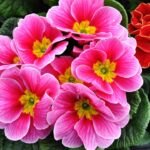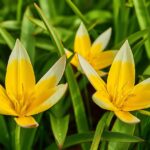The light requirements of the bachelor palm

The Zamioculcas zamiifolia has earned a well-deserved reputation as a premier low-light houseplant, capable of surviving in conditions where many other plants would falter. This remarkable adaptability makes it a versatile choice for a wide range of indoor settings, from brightly lit living rooms to dimmer office corners. However, it is crucial to understand the distinction between surviving and thriving. While the ZZ plant can indeed tolerate low light, it will not exhibit its best growth or form in near darkness. Its ideal environment is one that provides bright, indirect light for several hours each day. This level of light fuels robust photosynthesis, leading to stronger stems, a lusher appearance, and the regular production of its characteristic glossy, deep green foliage.
In its native habitat in Eastern Africa, the ZZ plant often grows in the understory of forests and on the floor of rocky savannas, where it receives dappled sunlight filtered through the canopy of larger trees. This evolutionary background explains its preference for indirect light and its aversion to the harsh, direct rays of the sun. Replicating these conditions indoors is the key to a happy plant. A spot near an east-facing window, which receives gentle morning sun, is often perfect. Alternatively, placing it a few feet back from a more intense south or west-facing window will provide ample brightness without the risk of sun damage.
The consequences of providing too little light are not immediately fatal but will result in a plant that is less than spectacular. In very dim conditions, the ZZ plant’s growth will slow to a near halt. It may go for many months, or even years, without producing a single new shoot. Existing stems may become elongated and weak, a phenomenon known as etiolation, as the plant stretches desperately toward the nearest light source. The foliage may also lose some of its deep green vibrancy, appearing duller in color. While it will live, it will not be the thriving specimen it has the potential to become.
Conversely, exposing the ZZ plant to too much direct sunlight can be actively harmful. The intense solar radiation can scorch the leaves, causing them to develop yellow or brown patches and a burnt appearance. The leaves may also curl in an attempt to minimize their exposure to the harsh light. If you notice these symptoms, it is a clear sign that the plant needs to be moved to a more protected location. Finding that “just right” balance of bright, yet gentle, illumination is the goal for cultivating a truly beautiful and healthy Zamioculcas zamiifolia.
Thriving in bright, indirect light
The optimal lighting for a Zamioculcas zamiifolia is bright, indirect light. This term describes the quality of light found in a well-lit room that does not receive direct, unfiltered sunbeams. Think of the ambient light in a room with large windows, or the light a few feet away from a sunny window, just outside the path of the direct rays. This level of illumination provides the plant with plenty of energy to photosynthesize efficiently without causing the stress associated with direct sun exposure.
More articles on this topic
When a ZZ plant receives an ideal amount of bright, indirect light, it will reward you with steady, healthy growth. New shoots will emerge from the soil more regularly during the growing season, and the plant will develop a full, robust form. The leaves will display their signature deep green, glossy coloration, which is a sign of a healthy plant operating at its peak. This is the condition you should aim to provide to see the plant’s full decorative potential.
Good locations for achieving this light level include near north or east-facing windows. North-facing windows provide consistent, gentle indirect light throughout the day. East-facing windows offer a few hours of mild, direct morning sun, which is generally not strong enough to harm the leaves, followed by bright indirect light for the rest of the day. Placing the plant across the room from a south or west-facing window is another excellent strategy to provide brightness without direct exposure.
One way to assess if your light is appropriate is to observe the shadows. If the plant casts a soft, blurry shadow, it is likely in good indirect light. If it casts a sharp, clearly defined shadow, it is probably receiving some direct sunlight, which may be too intense. Pay attention to how the light changes throughout the day and the seasons to ensure your plant remains in its optimal spot. A plant that is thriving in its location will be a vibrant and structural addition to your home.
The meaning of low-light tolerance
The ZZ plant’s fame is built upon its “low-light tolerance,” but this phrase is often misunderstood. It does not mean the plant prefers or thrives in darkness; it simply means the plant has the ability to survive for extended periods in less than ideal lighting conditions. This is a crucial distinction for plant owners who want their plants to not just live, but to flourish. The plant’s slow metabolism and efficient energy storage in its rhizomes allow it to subsist on very little light, but this is a survival mode, not a growth mode.
More articles on this topic
In a low-light environment, such as a dimly lit office, a north-facing room with small windows, or a hallway far from a light source, the ZZ plant will likely cease all visible growth. It will maintain its current form for a very long time, which is why it is often called the “eternity plant.” While this extreme low-maintenance aspect can be an advantage in certain decorative contexts, it is important to have realistic expectations. The plant will not become fuller or larger in these conditions.
The visual cues of a plant in too little light include a lack of new growth, and sometimes, the stems may begin to lean or stretch towards the nearest window or lamp. This etiolation results in a leggier, less compact plant as it invests its limited energy into seeking more light. The deep green color of the leaves may also fade to a lighter shade of green. While these are not signs of immediate danger, they indicate that the plant is not receiving enough energy to maintain its ideal state.
To care for a ZZ plant in a very low-light setting, it is even more critical to be sparse with watering. With minimal light, photosynthesis slows down dramatically, and the plant’s water usage becomes almost negligible. The soil will stay moist for a very long time, making the risk of root rot extremely high. If you must keep your ZZ plant in a dim location, you must be prepared to water it very infrequently, perhaps only a few times a year.
The dangers of direct sunlight
While insufficient light leads to stagnation, excessive light in the form of direct, intense sun can cause active damage to the Zamioculcas zamiifolia. The plant’s leaves are not adapted to handle the harsh, unfiltered rays of the midday or afternoon sun. Prolonged exposure can lead to a condition known as sunburn or leaf scorch, which manifests as unsightly patches on the foliage.
The first signs of sun stress are often a yellowing of the leaves, sometimes referred to as bleaching. The deep green chlorophyll begins to break down under the intense light. If the exposure continues, this yellowing can progress to brown, dry, or crispy patches on the parts of the leaves most exposed to the sun. In severe cases, the entire leaf may turn yellow and die off. You may also notice the leaves curling inward, which is a defensive posture the plant adopts to reduce the surface area exposed to the damaging rays.
The most dangerous locations for a ZZ plant are in an unprotected south or west-facing window, where it will be blasted by the strongest sun of the day. If these are the only window options available, the plant must be protected. You can place it several feet back from the glass, so it is out of the path of the direct sunbeams. Alternatively, you can filter the light by using a sheer curtain, which diffuses the light and reduces its intensity to a level the plant can tolerate.
It is important to remember that the intensity of the sun changes with the seasons. A location that is perfect in the winter may become too intense in the summer when the sun is higher and stronger. Be observant of your plant as the seasons change. If you start to notice signs of sun stress during the summer months, do not hesitate to relocate it to a shadier spot. Protecting your plant from direct sun is essential to keeping its foliage looking flawless and healthy.



















